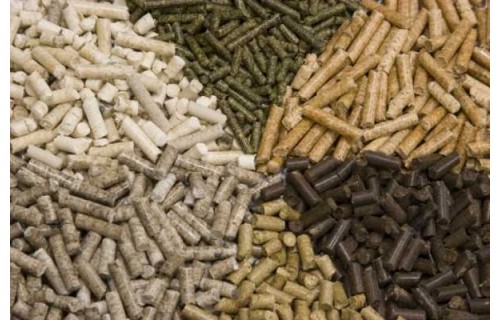Screw feeders - a step towards automation

At the beginning of the 20th century, Henry Ford revolutionized the automotive industry and introduced a new logistical invention to his car factories - the production line. This point in the history of industry can be considered the beginning of production automation - a process that is still being perfected today.
However, you don't have to be a car magnate from Detroit to implement such solutions in your work. To start off, all you need is our hero of today - screw feeder.
What is a screw feeder?
A screw feeder, also known as a trough feeder, is a device designed to transport bulk material, usually within a simple production line. Its operation is based on the rotation of a characteristic, spiral screw, from which the feeder gets its name. The transport screw, a sort of concave channel filled with the material being fed, can rotate faster or slower, thereby regulating the feeding rate. The whole mechanism is incredibly simple and therefore reliable.
Screw feeder - what are the applications?
Screw feeders are used to move loads consisting of small, dry, unrelated particles to subject them to further production processes. These can be grains, shavings, sawdust, chips, bran, and more.
Where can a screw feeder be used?
In a sawmill
A screw feeder is suitable for all types of wood processing plants, especially those generating large amounts of loose waste. In this configuration, a screw feeder can feed sawdust to a briquetting machine or granulator and thus be part of the pellet or briquette production line.
Check out our other article: pellet production
In processing plants
Feeders are also used in agriculture and the processing of agricultural crops.
The transport screw will easily handle all kinds of grains. This type of equipment will also greatly facilitate the loading of bags and silos.
In industry
Gravel, rubble, sand, bran - these are materials widely used in industry. A screw feeder will ensure the correct dosing of these materials. Especially when combined with an automated production line, a well-configured feeder can significantly speed up and facilitate many processes. Trough feeders are also used in chemical plants, where precise and controlled dosing of substrates is mandatory.
In a boiler room
A screw feeder is also a good fuel dispenser. For example, in pellet burners connected to a feeder controller, the feeder adds the appropriate amount of fuel to the furnace depending on the current heat demand.
In conclusion:
Screw feeders are versatile devices that, in their simplicity and universality, have no equal. They guarantee precision and continuity of work, which is hard to achieve with manual dosing of bulk material. They work great in almost any production line, regardless of its complexity. In addition to logistical benefits, screw feeders relieve physical workers and, in a way, take the burden of the load off their shoulders.










